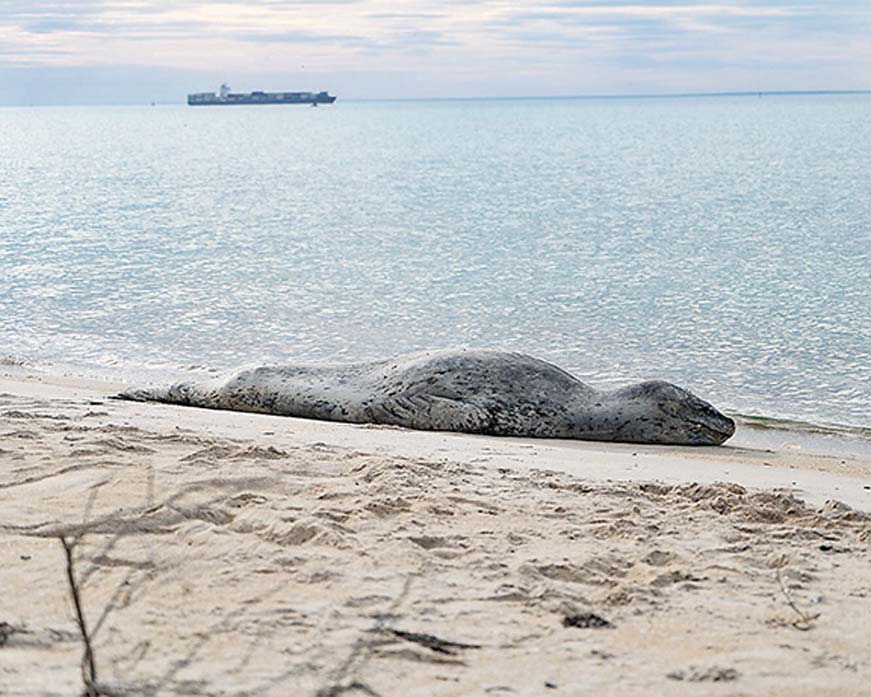
WHILE it’s not uncommon to find a seal on Mornington Peninsula beaches or rocky outcrops, this one that came ashore at Dromana was a bit of a mystery for onlookers.
It looked different to the Australia fur seals regularly seen Port Phillip and which make their home at Chinaman’s Hat, the octagonal shipping beacon in the South Channel off Blairgowrie.
Ryhs Horobin said he and his partner Angelika Schernthaner were thrilled to identify the leopard seal which was probably more at home in Antarctica.
He said the male seal was about 15 years old stayed for about fours days on the beach at Dromana in early November.
While acknowledging the novelty of seeing leopard seals, Dolphin Research Institute director Jeff Weir says their presence in the bay raises many questions, including “anecdotes” about changes to food stocks and strandings [of whales] “in the wider ocean”.
He sees these reports as “really big picture worrying signs”.
“Why do these odd solitary animals come so far out of their range?” Mr Weir said.
“Are they like human hermits? Are they unhealthy and can’t compete? Is there something happening to their normal range that is making it hard for them to feed?
“We’ve seen leopard seals here before, so it might be that the hermit analogy best applies.”
Leopard seals are also known as sea leopards and are the second largest species of seal in the Antarctic.
They follow killer whales as being the Antarctica’s top predator and prey on many animals, including cephalopods (including octopuses, squid, and cuttlefish), other seals, krill, birds and fish. Killer whale, or orcas, will prey on leopard seals.
While potentially dangerous to humans, attacks by leopard seals are rare.
First published in the Southern Peninsula News – 11 December 2018